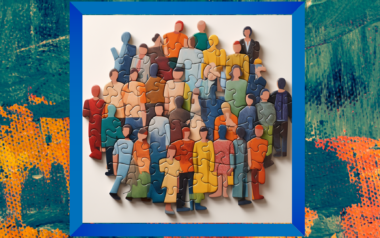Below is a short excerpt from my book – Happy Reading!
“Take the time to be deliberate, but when the time for action has arrived, take action and go in.”
—Napoleon Bonaparte
It is extremely easy to not decide. Often, people who get ‘stuck’ simply don’t make a change because they worry that things might get worse. Or are afraid of the unknown. But what they forget is that not making a decision is a decision. When going through WINX, you will be asked to document the impact of the current problem, side by side with the impact of the various options. And that in itself will help you push forward.
Here is an example. When working with employers I never recommend terminating anyone if we can help those employees succeed—and often we can. However, when it is clear that we can’t, it’s time to cut the losses. I can’t tell you how often these employers hold onto people until they are so very frustrated because they create such huge problems (and they always do) that the tremendous negative impacts on their customers, often other employees, and always their company is no longer tolerable
And I do understand. I had the same problem as a VP. My boss strongly recommended when I started this role that I replace one of my managers. Of course, thinking I could fix the problem, I held on. I tried and tried to work with him. He was hard-working, loyal, and kind. The problem was he was not meant for the role of a leader. I will never forget the day I lost a large account over my decision to hold onto this employee for far too long. My poor decision to hold on only got worse. Terminating this man was a difficult task, but it was necessary, and waiting did not help me, my customers, or my employer. (In case you care to know, he is doing great now. He is in a business more suited for him, and yes, we remain friends!)
There are many problems that must be looked at thoroughly when assessing the impact of the current problem.
While researching this book, I read an article by a Navy SEAL that said, “…if there’s one thing you learn in Navy SEAL training, it’s that decisions don’t just randomly or haphazardly happen. You have to make a conscious choice to be someone who makes decisions. You have to “decide to decide.”
Every choice, every decision a SEAL makes has consequences—often life or death consequences—and that’s why SEAL training is primarily concerned with a careful, highly structured decision-making process.
One of the misconceptions many people have about the SEALS and other special forces groups, or law enforcement, SWAT teams, etc., is that they’re “big risk-takers.” They’re not. They’re among some of the most “risk-averse” people I know. They make careful, calculated decisions—not random, off the cuff, “let’s see what happens if we do X” decisions.
Special forces, military men and women, law enforcement, athletes, firemen, and other first responders—people who spend their lives “taking risks” are more prepared than most and survive incredible things that would kill you or I. How do they manage?
These men don’t just learn how to make decisions under pressure, with no sleep, and in the face of imminent threats. They learn how, when, and why to make decisions so the most important decisions can be made next. They make decisions during their training that they’ll have to make in the real event. They learn how to make what I call “WINX decisions—decisions that take into account the big picture, the impact of their decisions, the impact on their people, their mission, and their purpose, and how to predict (as much as humanly possible) how far and in what direction the ripples will reach.”
“Deciding to decide” isn’t an ethos exclusive to the SEALS. Many corporations, leaders, CEOs, and athletes also embrace the term. The best—embrace the lifestyle, taking time to research, explore, and examine all their options—just like a SEAL would do.
Of course, every problem does not need an immediate decision. However, without assessing the impact you may be doing much more harm, than good.
——————
If you are interested in purchasing a copy of my award winning book
WINX – The Problem Solving Model to Win Exponentially with Customers, Employees & Your Bottom Line
or for a free consultation on how we can help your organization, check out our website www.ParoneGroup.com.


